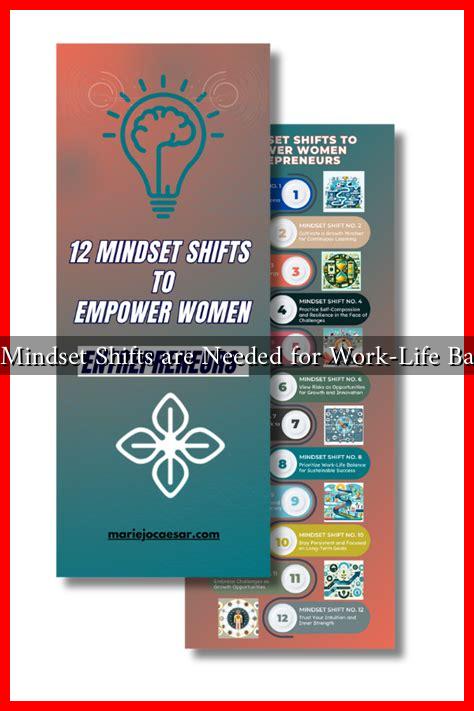-
Table of Contents
What Mindset Shifts are Needed for Work-Life Balance?
In today’s fast-paced world, achieving a healthy work-life balance has become a significant challenge for many individuals. The constant demands of work, coupled with personal responsibilities, can lead to stress, burnout, and a decline in overall well-being. However, by adopting specific mindset shifts, individuals can create a more harmonious balance between their professional and personal lives. This article explores the essential mindset changes needed to foster work-life balance, supported by research and real-world examples.
Understanding Work-Life Balance
Work-life balance refers to the equilibrium between the time and energy devoted to work and personal life. It is crucial for maintaining mental health, physical well-being, and overall life satisfaction. According to a survey by the American Psychological Association, 61% of adults reported that work is a significant source of stress in their lives. This statistic underscores the importance of finding a balance that allows individuals to thrive both professionally and personally.
Key Mindset Shifts for Achieving Work-Life Balance
To cultivate a healthier work-life balance, individuals must embrace several mindset shifts:
- Prioritization of Self-Care: Recognizing that self-care is not selfish but essential is the first step. Individuals should prioritize their physical and mental health by incorporating regular exercise, healthy eating, and mindfulness practices into their routines.
- Redefining Success: Many people equate success with long hours and constant availability. Shifting this mindset to value quality over quantity can lead to more productive work and a more fulfilling personal life.
- Setting Boundaries: Establishing clear boundaries between work and personal time is crucial. This may involve setting specific work hours, turning off notifications after hours, or creating a dedicated workspace at home.
- Embracing Flexibility: The traditional 9-to-5 work model is becoming less relevant. Embracing flexible work arrangements can help individuals manage their time more effectively, allowing for personal commitments without sacrificing professional responsibilities.
- Fostering a Growth Mindset: Adopting a growth mindset encourages individuals to view challenges as opportunities for learning and development. This perspective can reduce stress and promote resilience in both work and personal life.
Real-World Examples and Case Studies
Several organizations have recognized the importance of work-life balance and have implemented policies that reflect these mindset shifts:
- Google: Known for its innovative work culture, Google offers flexible work hours and encourages employees to take time off for personal projects. This approach has led to increased job satisfaction and productivity.
- Salesforce: The company has implemented a “Ohana Culture,” which emphasizes family and community. Salesforce encourages employees to prioritize their well-being, resulting in lower turnover rates and higher employee engagement.
- Buffer: This social media management platform operates on a fully remote model, allowing employees to work from anywhere. Buffer promotes a healthy work-life balance by encouraging employees to set their own schedules and take time off when needed.
Statistics Supporting Work-Life Balance Initiatives
Research supports the notion that work-life balance initiatives lead to positive outcomes for both employees and organizations:
- A study by the World Health Organization found that employees with a good work-life balance are 21% more productive.
- According to Gallup, organizations that prioritize employee well-being experience 41% lower absenteeism and 17% higher productivity.
- The Harvard Business Review reported that companies offering flexible work arrangements see a 25% increase in employee satisfaction.
Conclusion
Achieving work-life balance requires intentional mindset shifts that prioritize self-care, redefine success, and establish boundaries. By embracing flexibility and fostering a growth mindset, individuals can create a more harmonious relationship between their professional and personal lives. Organizations that support these shifts not only enhance employee well-being but also boost productivity and engagement. As we navigate the complexities of modern work, it is essential to remember that balance is not a destination but a continuous journey. For more insights on achieving work-life balance, consider exploring resources from the [American Psychological Association](https://www.apa.org).

